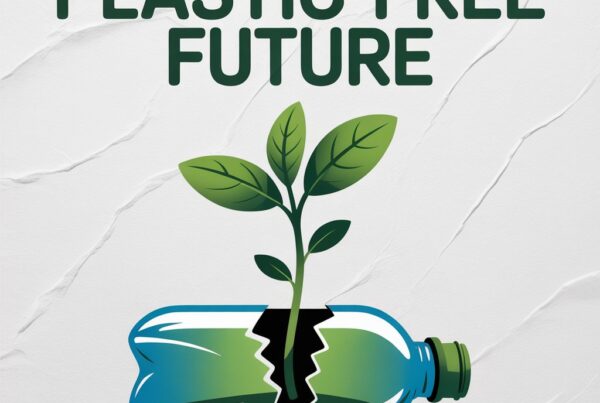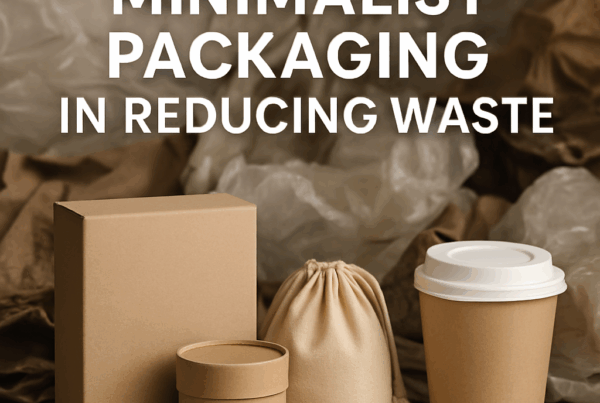Biodegradable Vs. Compostable Packaging - Key. Differences
Introduction: The Green Packaging Dilemma
As businesses and consumers look for greener solutions, terms like “biodegradable” and “compostable” are everywhere. While they may seem interchangeable, these two types of packaging have distinct differences. Understanding these differences is crucial for eco-conscious decisions, especially in industries shifting toward sustainable practices.
In this blog, we’ll break down the key differences between biodegradable and compostable packaging, explore their environmental impacts, and help you decide which option is better for your brand or daily use.
What is Biodegradable Packaging?
Biodegradable packaging refers to materials that break down naturally over time through the action of microorganisms like bacteria and fungi. These materials can decompose into natural elements such as water, carbon dioxide, and biomass.
Characteristics
- Made from plant-based or organic materials
- Breaks down under various environmental conditions
- Decomposition time varies widely (months to years)
Examples
- Paper bags
- Bioplastics (e.g., PLA)
- Some types of cardboard
Pros
- Reduces landfill waste
- Can degrade in natural settings (landfills, oceans)
- Often less toxic than traditional plastic
Cons
- No standard timeframe for degradation
- May leave toxic residue if additives are used
- Not always recyclable or compostable
What is Compostable Packaging?
Compostable packaging is a specific type of biodegradable material that breaks down under controlled composting conditions into nutrient-rich soil without leaving toxic residue.
Characteristics
- Must meet industrial or home composting standards (e.g., ASTM D6400, EN13432)
- Decomposes into water, carbon dioxide, and compost
- Requires heat, moisture, and oxygen to break down efficiently
Examples
- Compostable mailers
- Food containers made from bagasse or cornstarch
- Compostable films and wraps
Pros
- Turns into usable compost
- No harmful residue
- Ideal for food packaging and green businesses
Cons
- Needs specific composting environments
- Not suitable for landfills or natural settings
- Can contaminate recycling streams if not disposed of properly
Key Differences at a Glance
Which is Better for the Environment?
Compostable packaging generally has a smaller environmental footprint when composted properly. Biodegradable packaging is a better alternative to plastic but can be misleading without clear disposal guidelines.
To ensure you’re making the right environmental choice:
- Always check for certification labels
- Educate consumers on proper disposal
- Consider your region’s composting infrastructure
How to Choose the Right Option for Your Brand
Ask These Questions:
- What kind of waste disposal systems are accessible to your customers?
- Will your packaging hold food or liquid products?
- Can you afford third-party certifications for compostable standards?
Pro Tips for Businesses:
- Use clear labeling: State whether packaging is compostable or biodegradable
- Include disposal instructions
- Partner with local composting facilities to close the loop
Related Terms to Know
- Oxo-biodegradable: Breaks down via chemical additives but may leave microplastics
- Home compostable vs. industrial compostable: Different decomposition requirements
FAQ's on Biodegradable Vs. Compostable Packaging
What’s the main difference between biodegradable and compostable?
Biodegradable means materials break down naturally over time, while compostable means they break down under specific composting conditions into safe compost.
Can biodegradable packaging go in compost?
Not always. Unless labeled as compostable, biodegradable items may not break down safely in compost bins.
Are compostable materials better than biodegradable ones?
Compostable materials are generally more eco-friendly if composted correctly. Biodegradable materials may leave residue or take longer to degrade.
Final Thoughts: Make Informed Eco-Friendly Choices
Choosing between biodegradable and compostable packaging is not just about green branding—it’s about actual environmental impact. While both options are more sustainable than traditional plastic, compostable packaging offers a clearer path to eco-friendly disposal when the infrastructure is available.
However, biodegradable materials may still be a better fit for certain markets or applications. Evaluate your brand’s goals, local disposal systems, and customer habits before making a decision.
If you’re interested in learning more about sustainable packaging trends or AI-driven tools to optimize your product lifecycle, check out our Ultimate Guide to Sustainable Packaging Implementastion.


